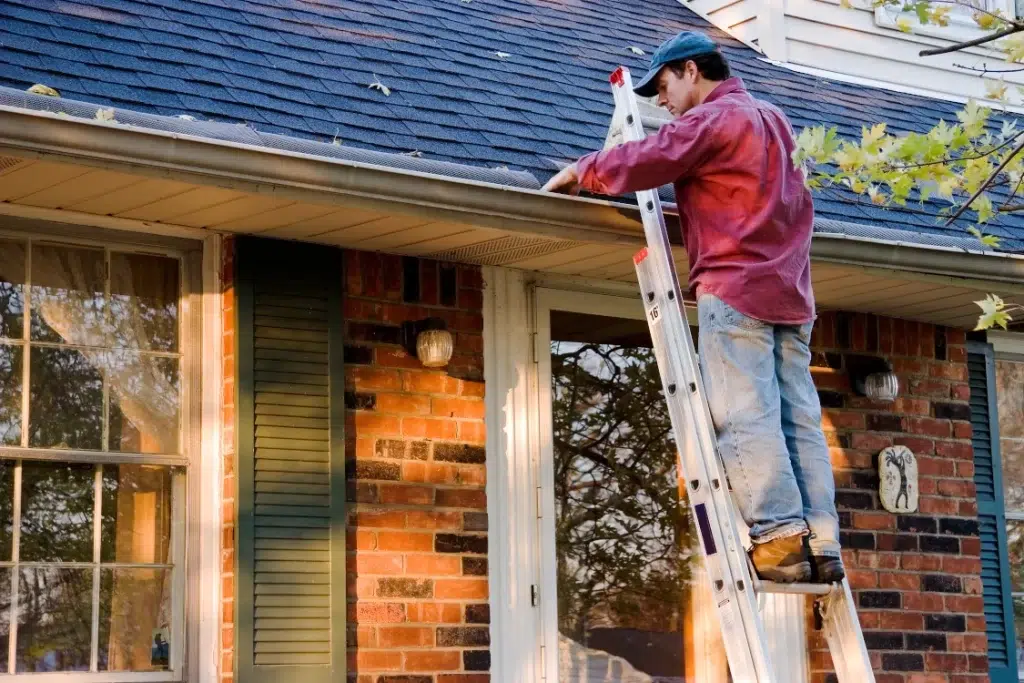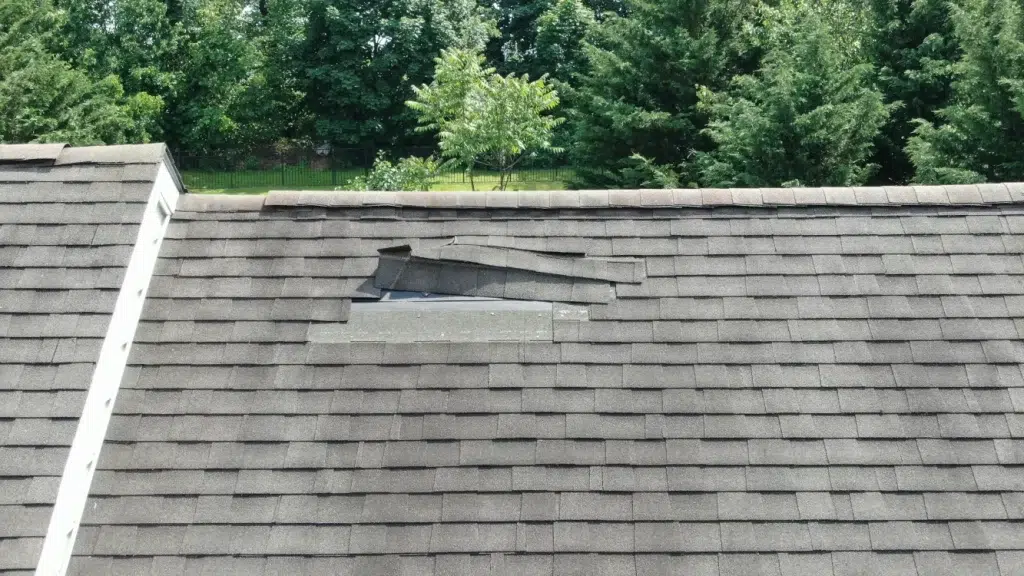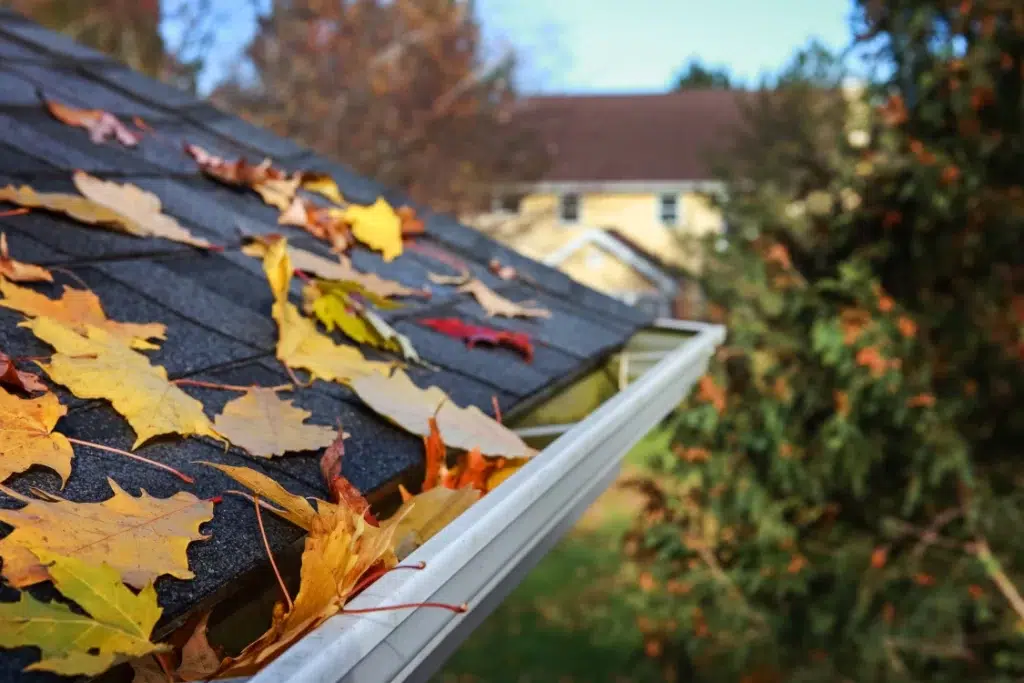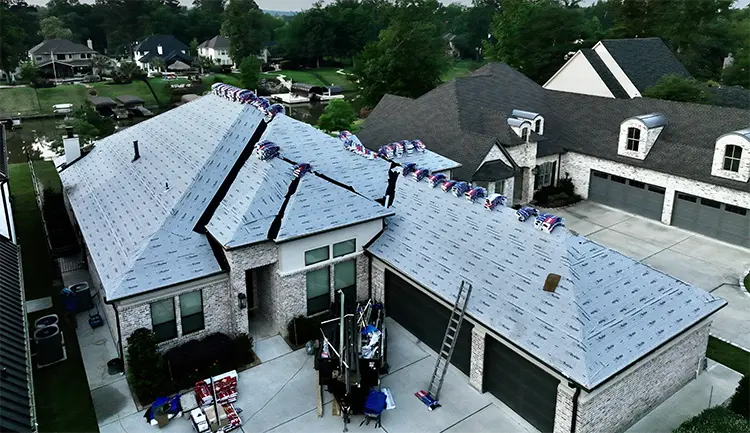A leaky roof can be a homeowner’s nightmare, causing damage to both the structure of your home and your belongings. Whether it’s a small drip or a major stream, addressing a leak promptly is crucial to prevent further damage. In this comprehensive guide, we’ll delve into effective ways to fix a leaky roof. We’ll explore detailed insights and step-by-step instructions to help you safeguard your home from the perils of water intrusion.
How to Repair a Leaky Roof
Knowing your plan is always the first step to the successful completion of any major project. Leaky roof repair is no exception. We will examine the following steps in greater detail below.
- Safety First
- Identify the Source
- Gather Tools and Materials
- Patch the Leaky Roof
- Replace Damaged Shingles
1. Safety First
Working on a roof poses inherent risks, so it’s important to prioritize safety. Use a sturdy, well-positioned ladder, wear non-slip shoes, and consider employing a safety harness. If the roof is steep or the damage is extensive, it’s wise to consult with a professional roofing contractor. They will complete the job safely and effectively.
Never compromise on safety measures, as accidents can lead to severe injuries or even fatalities. Especially when performing repair work on sloping, elevated surfaces like roofs. Professional roofing companies provide their roofers safety training and professional grade tools which minimize the danger risk.

2. Identify the Source
Before attempting any repairs, it’s vital to pinpoint the exact source of the leak. Begin your investigation by inspecting your attic, ceilings, and walls for water stains, blotches, or mold growth. Trace the path of the water to determine the precise point of compromise.
3. Gather Tools & Materials
To fix a leaky roof, you’ll need a set of basic tools and materials. These may include roofing nails, a hammer, roofing cement, roofing tape, a putty knife, matching replacement shingles, and a pry bar.
Make sure you have everything on hand before ascending to the rooftop to minimize trips up and down the ladder. Having the right tools and materials at your disposal also ensures that the repair process is smooth and efficient.
4. Patch the Leaky Roof
Once you’ve successfully identified the source of the leak, it’s time to begin patching the damaged area. For small cracks and gaps, roofing cement is your go-to solution. Its flexibility allows it to conform to irregular surfaces, providing an effective and durable seal.
Ensure the affected area is clean and dry before applying the roofing cement. Make a point to examine the area around the patch and ensure there are no other potential weak spots that could cause future leaks.
5. Replace Damaged Shingles

Damaged or missing shingles are a common cause of roof leaks in shingle roofs. To replace them, start by removing the damaged shingle and any nails or adhesive that remain. Once complete, slide the new shingle into place, securing it with roofing nails.
Be sure to use shingles that match your existing roof to maintain a uniform appearance. While replacing damaged shingles, note the condition of the surrounding shingles. Any compromised shingles can contribute to future leaks and damage.
How to Prevent a Leaky Roof
Prevention is always better than repair. Your roof will remain stronger and last longer the more you are able to prevent damage from occurring. Follow these tips for maximum preventive protection.
- Install a Waterproof Membrane
- Perform Regular Roof Maintenance
- Know Your Roofing Materials
- Manage Gutters and Drainage Systems
- Consider Climate and Weather Conditions
- Explore Roof Coatings
- Educate Yourself on Roofing Regulations
- Keep Up with Preventive Measures
- Call in the Professionals
1. Install a Waterproof Membrane
Damaged or missing shingles are a common cause of roof leaks in shingle roofs. To replace them, start by removing the damaged shingle and any nails or adhesive that remain. Once complete, slide the new shingle into place, securing it with roofing nails.
Be sure to use shingles that match your existing roof to maintain a uniform appearance. While replacing damaged shingles, note the condition of the surrounding shingles. Any compromised shingles can contribute to future leaks and damage.
2. Perform Regular Roof Maintenance
Preventive measures are crucial in ensuring the long-term health of your roof. Conduct regular inspections to identify any potential issues before they escalate into major problems. Clear debris such as leaves, branches, and other materials that can accumulate on the roof. They can trap moisture and lead to rot and decay
Additionally, trim overhanging branches to prevent them from scraping against the roof during storms and causing damage. Keeping your roof well-maintained not only prevents leaks but also extends its lifespan. You’ll save money on costly repairs and replacements in the long run.

3. Know Your Roofing Materials
Different roofing materials require different approaches to maintenance and repair. For example, asphalt shingles are susceptible to cracking and blistering. Metal roofs, on the other hand, may develop rust or corrosion over time.
Understanding the specific needs of your roofing material is essential. It allows you to implement effective maintenance practices and perform needed repairs correctly. Consult the supplier’s guidelines or a local roofing professional to determine best practices for your specific roofing material.
4. Manage Gutters and Drainage
Properly functioning gutters and drainage systems are integral to the health of your roof. Clogged gutters can lead to water backup, causing water to seep under the roof and into your home. Regularly clean your gutters to remove any debris and ensure that water flows freely.
Consider installing gutter guards to prevent the build up of leaves and other debris. Additionally, check the alignment of your downspouts to direct water away from the foundation of your home. You want to prevent water from pooling and causing potential structural damage.
5. Consider Climate & Weather Conditions
Climate and weather conditions play a significant role in the health of your roof. Extreme temperatures, heavy rainfall, snow, and high winds can all take a toll on the integrity of your roof over time. Research the specific challenges posed by your local climate. You can implement preventive measures that protect your roof from potential damage.
Consider investing in insulation to regulate temperature fluctuations and prevent ice dams during the winter. Additionally, regularly inspect your roof after severe weather events to identify any potential damage and address it promptly.
6. Explore Roof Coatings
Roof coatings are an effective way to protect your roof from the elements and extend its lifespan. They provide an additional layer of protection against UV rays, water damage, and general wear and tear. Roof coatings are available in various types, including acrylic, silicone, and polyurethane, each offering specific benefits depending on your roofing material and climate.
Your roof is a sizeable investment and plays a vital role in protecting your family and everything you own. Consult with a roofing professional to determine the most suitable roof coating for your specific needs. Hiring a professional roofer will also ensure proper application for optimal results.
7. Educating Yourself on Roofing Regulations
Familiarize yourself with local building codes and regulations related to roofing repairs and installations. Compliance with these regulations is essential, but not only for the safety and structural integrity of your home. Following regulations will also ensure you avoid potential legal repercussions.
Certain areas may have specific guidelines regarding the type of roofing material, installation procedures, and structural requirements. Make sure that any repairs or replacements adhere to these regulations. Doing so will prevent any issues that may arise during home inspections or property assessments.
8. Keep Up with Preventive Measures
While it’s crucial to know how to fix a leaky roof, preventing leaks in the first place is even more important. Preventive measures and regular maintenance significantly reduces the risk of roof leaks, extending the lifespan of your roof. Conduct regular inspections, address minor issues promptly, and invest in protective measures that fortify your roof against the elements. By staying proactive and vigilant, you can save yourself the hassle and expense of major repairs from neglected maintenance.

9. Call in the Professionals
If you’re uncomfortable working on your roof or the damage is extensive, it’s best to call in the professionals. A roofing contractor can assess the damage and provide a comprehensive repair plan. They have the tools, experience, and expertise to get the job done safely and effectively.
Professional roofers can also provide valuable insights into potential issues that may not be apparent to an untrained eye. Their comprehensive approach addresses the underlying problems, preventing future leaks and extending the lifespan of your roof.
Getting the Best Life Out of Your Roof
Fixing a leaky roof is a task that requires patience, attention to detail, and a commitment to safety. However, by following the steps outlined in this guide, you can safeguard your home from the perils of water intrusion. At the same time, you will prolong the functional life of your roof. Regular maintenance and prompt repairs are key to preserving roof integrity and preventing water leaks.
When in doubt, always consult with a professional who will execute the repair process with precision and expertise. Remember, a well-maintained roof not only enhances the aesthetic appeal of your home. It also provides essential protection for you and your family.


